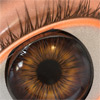- Tue May 24, 2005 10:29 am
#27587
He's going to the basement because his wife got tired of seeing half empty (full?) glasses of wine all over the house 
Hervé, you're right but I suppose we're always dealing with approximations, and having a fairly accurate scene based on controlled reality is better than just having a 3D scene and comparing that with chaaaooss.
Hervé, you're right but I suppose we're always dealing with approximations, and having a fairly accurate scene based on controlled reality is better than just having a 3D scene and comparing that with chaaaooss.
Maxwellzone.com - tutorials, training and other goodies related to Maxwell Render
Youtube Maxwell channel
Youtube Maxwell channel






